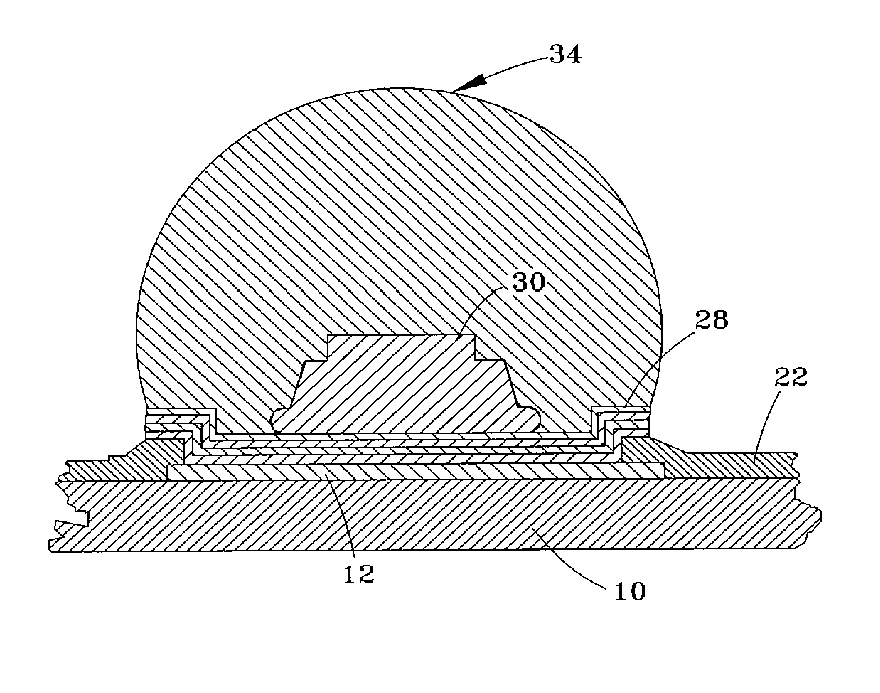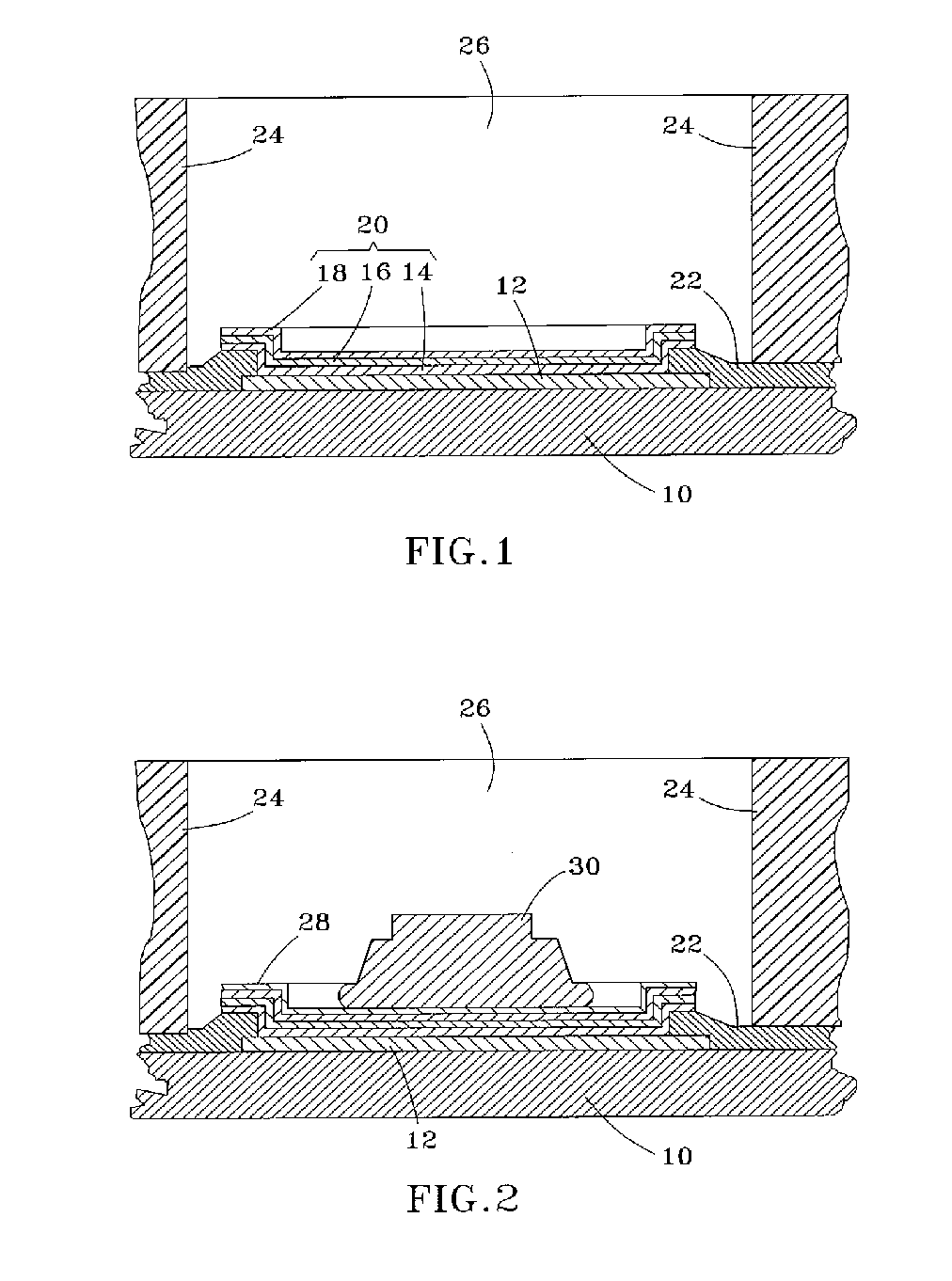Method of solder bumping a circuit component and circuit component formed thereby
a technology of circuit components and solder bumps, which is applied in the direction of semiconductor devices, semiconductor/solid-state device details, electrical apparatus, etc., can solve the problems of “electrically open” solder joints, general unsolderability and corrosion of aluminum and its alloys, and reduce the efficiency of solder bumping, so as to prevent or at least reduce the effect of solder connection degradation by electromigration
- Summary
- Abstract
- Description
- Claims
- Application Information
AI Technical Summary
Benefits of technology
Problems solved by technology
Method used
Image
Examples
Embodiment Construction
[0016]FIGS. 1 through 5 represent partial cross-sectional views of a surface region of a semiconductor die 10, such as a flip chip, as it is prepared for and then undergoes solder bumping in accordance with the present invention. As described previously, FIG. 1 shows the surface of the die 10 as being protected by a passivation layer 22 that, as known in the art, protects the die 10 from environmental contaminants, moisture, and electrical shorts. The passivation layer 22 is typically silicon dioxide, though silicon nitride, polyimides, phosphosilicated glass (PSG), borophosphosilicated glass (BPSG), or organic layers such as polyimide, BCB (benzocyclobutene), or PBO (polybutylene oxide) may also be used. A portion of a runner is exposed by an opening in the passivation layer 22, defining what is termed herein an interconnect pad 12. The runner and pad 12 can be conventionally formed of aluminum or an aluminum-base alloy, which renders the pad 12 generally unsolderable and susceptib...
PUM
| Property | Measurement | Unit |
|---|---|---|
| thicknesses | aaaaa | aaaaa |
| thickness | aaaaa | aaaaa |
| temperature | aaaaa | aaaaa |
Abstract
Description
Claims
Application Information
 Login to View More
Login to View More - R&D
- Intellectual Property
- Life Sciences
- Materials
- Tech Scout
- Unparalleled Data Quality
- Higher Quality Content
- 60% Fewer Hallucinations
Browse by: Latest US Patents, China's latest patents, Technical Efficacy Thesaurus, Application Domain, Technology Topic, Popular Technical Reports.
© 2025 PatSnap. All rights reserved.Legal|Privacy policy|Modern Slavery Act Transparency Statement|Sitemap|About US| Contact US: help@patsnap.com



